#Telluria
Text

ArtFight attack for @groundbit >:3c
Telluria Chalcogen giving her boss a call :3c
13 notes
·
View notes
Text
Aristasian Geography: Beyond the Map
Source
This little map shows only the West and hither-East of the Motherland. Its precise accuracy is to be doubted and it should be looked on rather like one of those mediaeval maps that have everything in more or less the right place but are often inaccurate as to precise shapes, sizes and details.
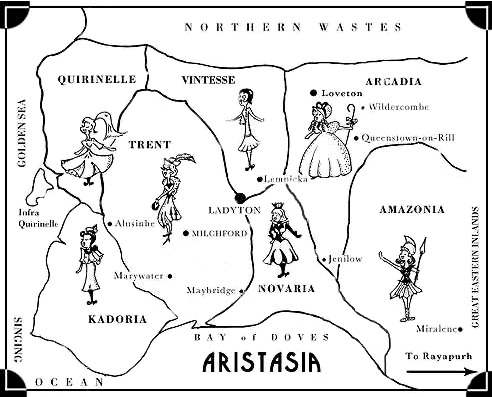
To the North of the map, the land is known to be very inhospitable. Millennia ago dark creatures lurked there and a few may still be there. The Queen of Kadoria was long ago entrusted with the task of maintaining North-Western security, and there is a narrow zone inside the Northern Wastelands, above Quirinelle and Vintesse, maintained by the Kadorian Army with patrols from other national forces. Further east, the borderlands are kept by the Arkadyani. Further east still there is a Great Wall built long ago. This is still kept by companies of archers and there are cavalry posts along the way in case of need. Nowadays these installations (both east and West) serve the function mostly of training camps, teaching the arts of survival and combat in rough country.
Eastward, in the North, the distinction between Arcadia and “Amazonia” becomes less clear. The true Arcadia is a land of reduced technics by Westrenne standards but is a Northern technical enclave in the East. Trains run regularly, the streets of the towns are gas-lit and the postal service (not strictly technical, but always remarked upon as part of the Arcadian passion for organisation) is legendary. In most of the great cities, one can post a letter the in morning, inviting someone to tea that same day, and receive a reply by lunch time.
Because of the non-forceful and somewhat “ritual” nature of Aristasian government, the Eastern boundaries of Arcadia have never been entirely clear, with certain Eastern princesses declaring themselves under the protection of Her Majesty Arkadyana for some purposes and not for others. But a thousand miles after the railway has been replaced by the stage-coach, where the stage itself has become intermittent and the mails are irregular, Arcadia may be said to have more-or-less ended and the government of the local royalty is far more important than any contact with the distant Arkadyani throne. Even here, though, you will find the odd enclave of West Arcadians running schools or trading companies or simply living there from choice, still living in West Arcadian style and dressing for dinner in the formal clothes of High Arcadia.
“Amazonia” as you will no doubt be aware, is not really a nation. It has no single Queen, though the far-Western Area (that shown on the map and a bit beyond) has rulers firmly loyal to the Westrenne Empress (whom they regard as Raihiranya Orvilanhela – the Empress of the World). As with Arcadia, things become less clear-cut as we move eastwards and eventually the border between “Amazonia” and Arcadia disappears as other forms of jurisdiction become more prominent.
We do not know as much about the East as we do about the West. Even in Sai Herthe itself, with the lack of modern communications in the East, it is not always easy to distinguish “hard fact” from “travellers’ tales” – and of course there is less anxiety to do so than there would be in Telluria. Facts are as important for what they have to tell us as they are for their correspondence to the material surfaces of things.
But here are some things we do know: Some way east and south of our map is Rayapurh (Sun-City). Rayapurh was the last of the great Eastern successors to the Cairen (or Caeren) Empire. Rayapurh retains much of its old glory and the question of whether the Empress at Rayapurh is Raihiranya Orvilanhela or whether that title has now passed to the Empress in the West is one that may never be satisfactorily settled. There is a recognition in the East that these latter days are the Time of the Setting Sun (that is, of the West). There are some that call the Empress at Rayapurh the Little Empress of the South and some who hold that she is the true Spiritual Sun of the world.
Incidentally, the Capital of Novaria is called Novarayapurh, and (since Raya also means “Lady”) the name of the Westrenne Imperial Capital, Ladyton, is a translation of Rayapurh.
East of Rayapurh we find many nations and principalities; some former Heiress-Empires of Caere, some continuing to claim Imperial glory in one degree or another; we find different races and peoples like the white-skinned Alvitsenhe (not pinkish-skinned like the Westrennes, but very white and almond-eyed); the great snow-capped mountain ranges, and beyond them Caere itself, its towers still standing but with no claimant to the Imperial Throne. The Chamber of the Empress is kept in its beautiful state, but the High Princess of Caere never uses it. There is no question that the seat of the Mayaraihiranya moved west long ago (that is, long before the time of present Westrenne Empire). Caere is still a great centre, perhaps the great centre of culture in the nether-East.
There are lands beyond Caere, and then the great and small islands of the Estrenne Sea.
To the West of our map it has long been held that the Isles of the Blessed lie and the Jewelled Paradise of the Daughter. It has been considered impious to sail very far beyond the Westrenne shores. Probably one could in fact circumnavigate the globe, and no doubt this prohibition constitutes something of a confusion of Sacred Geography with material geography and is one of the few really “pre-modern” ideas to continue to prevail in the West.
There may, however, be a profound reason for this. The reader cannot by now be unaware that East and West have a symbolic (and therefore ritual) significance beyond their merely spatial reference (or rather because of it, for even the ignorant never cease in reality to move in sacred space). The opening of the “West beyond the West” in Telluria has gone hand in hand with the Rationalist Revolution, and it may be that one is the geographical equivalent and ritual enactment of the other.
However that may be, the further reaches of the Golden Sea are held to be sacred and inviolable, and of the very few who have ever sailed thither, none has returned to tell the tale – nor ever set out with the intention of returning.
6 notes
·
View notes
Text
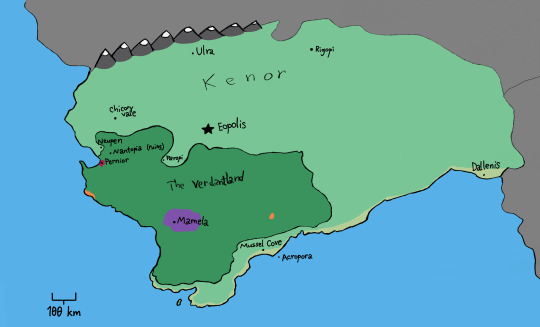
I drew a map of Kenor, the country where the Verdantland Trilogy takes place.
Kenor is the birthplace of the Tachytely. The name comes from Kenorland. It is loosely based on Western and Southern Europe (as a whole), and has a subtropical climate.
As you can see, most of its area is comprised of grassland. The yellowish strips around the coast are Mediterranean-type scrubland.
Only places that appear / have been mentioned in the story so far are shown here. The eastern half of the country isn’t as empty as this map makes it look.
The two bordering countries and the surrounding ocean are unnamed.
Quick explanations of the settlements under the cut:
Eopolis: The capital, as you’ve probably guessed. One of the five cities that have a population of over a million (the other four are Marnela, Rigopi, Dallenis, and Ulra).
Chicory Vale: A small farming town (one of very many). Taryn is from here.
Neupen: Large town that does a lot of trade.
Nantopia: A ruin site from the ancient Pilkarpian civilization. Abandoned millennia ago.
Pernior: A town currently surrounded by a forest of altered rhodophytes. Historically a port town.
Paropi: The big trans-Verdantland railway lines go through here.
Marnela: Largest city in the Verdantland. Sometimes referred to as the forest’s “capital”, though this is controversial due to certain implications.
Mussel Cove: Tiny seaside village (location on the map isn’t quite accurate for the sake of visual clarity). Florence (no ref link for her because it’s outdated) is from here.
Acropora: A settlement of pelagics (marine-adapted humans) built on a coral reef. Florence’s mother is from here.
Ulra: Known for its stunning architecture. Taryn’s family is originally from here.
Rigopi: Home to a big pro-Verdantland organization.
Dallenis: Popular tourist destination. Also seaside. Known for its unique crop of “night-wheat”, among many other things.
2 notes
·
View notes
Text
Vladimir Sorokin's novel Telluria is a polyglossic satirical epic pieced together in vital miniatures
Vladimir Sorokin’s novel Telluria is a polyglossic satirical epic pieced together in vital miniatures
Vladimir Sorokin’s 2013 novel Telluria, in its first English translation thanks to the estimable talents of Max Lawton, is one of the best contemporary novels I’ve read in a long time. Telluria is a polyglossic satirical epic pieced together in vital miniatures. Its fifty sections are simultaneously discrete and porous, richly dense but also loose and funny. It teems with life and language,…

View On WordPress
6 notes
·
View notes
Text
...the Russian Empire, which showed the world Asian-Byzantine despotism in combination with indecently dimensionless colonial geography, a harsh climate, and a submissive populace, a large portion of which lived like slaves. The twentieth century is far more interesting, starting with a world war, during which the monarchic titan of Russia began to stagger, followed by a bourgeois revolution that surged forth rather naturally, after which the titan began to tumble over. Perhaps it'd be better to say "titaness" (grammatically speaking, Russia is a feminine noun). Her imperial heart stopped. If she, this gloriously merciless giantess wearing a diamond tiara and a mantle of snow, had properly collapsed in February 1917 and disintegrated into a collection of human-size states, everything would have turned out more or less in keeping with the spirit of modern history, and the nations that had been oppressed by the czar's power would finally have gained their postimperial national identities and begun to live freely. But everything happened differently. The Bolshevik Party did not allow the giantess to fall, compensating for its small numbers with its beastly bite and inexhaustible social activity. Having successfully pulled off a nighttime coup in Saint Petersburg, they stopped the falling corpse of empire just before it hit the ground. I see Lenin and Trotsky precisely as tiny caryatids, holding up the dead and beautiful giantess with furious grunts. Despite their "fierce hatred" for the czar's regime, the Bolsheviks ended up being neoimperialists to their core; after they won the Civil War, the corpse was rechristened as the "USSR," a despotic state with centralized governance and a rigid ideology. As befits any empire, the USSR began to expand and to seize new lands. But Stalin turned out to be the purest imperialist of this new imperial circumstance. He didn't become a caryatid, but simply decided to raise up the imperial corpse. This was called kollektivizatsia industrializatsia. He did so for ten years, raising up the giantess according to the method of ancient civilizations that necessitated laying stones underneath a statue in order to successfully erect it. Instead of stones, Stalin used the bodies of citizens of the USSR, As a result, the imperial corpse assumed an upright position. They then applied makeup to its face, rouge to its cheeks, and froze it. The freezer of Stalin's regime worked without fail. But, as everyone knows, no technology shall serve us forever-just remember your wonderful red BMW. After Stalin died, the corpse began to thaw. They just managed to get the freezer running again, but not for long. Finally, the body of our beauty melted for good and she once again began to topple over. New hands rose up to catch her and post-Soviet imperialists were ready to turn into caryatids. But, at that moment, a wise group finally came to power, one led by a man who was unprepossessing at first glance. He turned out to be a wonderful liberal and psychotherapist. For a decade and a half, this toiler of the fall talked constantly about the revival of empire, while doing everything he could to make the corpse land successfully. And that's what happened. After which another life melted into being amongst the shattered bits of the beauty.
Vladimir Sorokin, Telluria
0 notes
Text
Agro State by K.D. McQuain
McQuain builds his future America from trends very evident in both the present and throughout history, creating a dystopian regime as authoritarian as the most speculative young adult fiction but with a pervasive realism that prevents it seeming safely impossible.
Continue reading Untitled
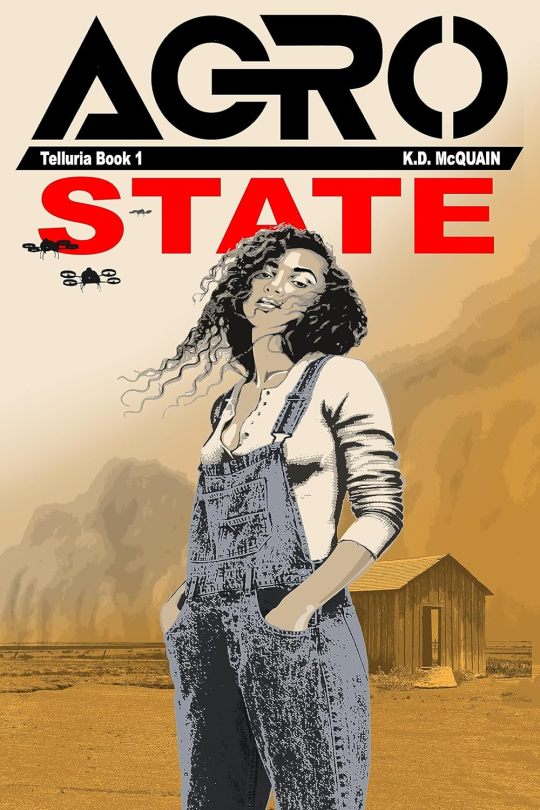
View On WordPress
1 note
·
View note
Text
KOLYMA STORIES - Varlam Shalamov (1954-1965, transl. 2018) & TELLURIA - Vladimir Sorokin (2013, transl. 2022)
Two very different books this time, both translated from Russian, both published by New York Review Books, and both collections of short stories of sorts.
Telluria is a work of speculative fiction, set in a future Russia.
Kolyma Stories is not so fictional, as it is Shalamov’s personal account of his 15 years in the gulag – one of the very few that survived in the system for such a long time. I’m…
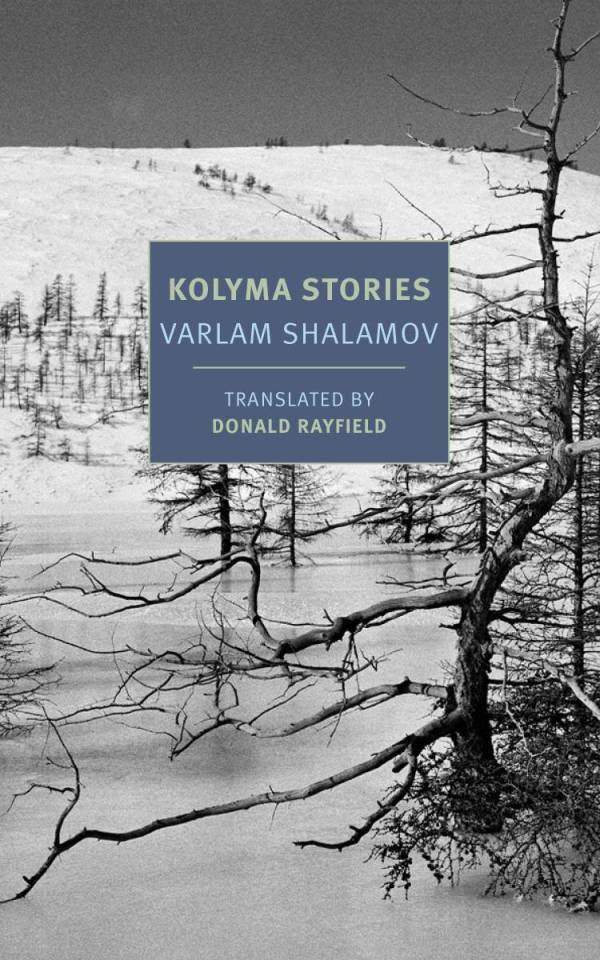
View On WordPress
#1970s#2010s#Donald Rayfield#Варла́м Шала́мов#Влади́мир Соро́кин#Колымские рассказы#Теллурия#gulag#Kolyma Stories#Kolyma Tales#Literature#Max Lawton#Russia#Russian literature#Science Fiction#Telluria#Varlam Shalamov#Vladimir Sorokin
1 note
·
View note
Text


Been busy with nanowrimo but allowed myself some time to draw some silly illustrations of applerankings featuring an increasingly off model Isaac.
#they probably don't have apples anymore on Telluria but shh about my non canon compliant apple comic#original character#oc#human oc#oc comic#applerankings#applerankings.com#suicide mention//#oc: isaac#my oc#verse: perigean tide
64 notes
·
View notes
Text
Operation Bridgehead
I’ve been asked what I can recall about Operation Bridgehead. I think it must have been 2006, and at that time there were still active text forums as well as the growing community who met in Second Life. SL was a real bandwidth hog at the time, and few girls had systems that could run it at a tolerable frame rate, so much of the conversation was still in text.
There was already an Embassy established in SL when the Operation Bridgehead announcement appeared on the forum. It may have been the Blue Camellia Club, but my memory is a sieve, and I could be wrong. I remember that the accompanying graphic was a screenshot from SL of a military brunette avatar silhouetted in front of the flag of the Empire. The gist of it was that Operation Bridgehead was a formal declaration that the community of Aristasians who existed in Elektraspace were a protectorate of the Empress.
I know I am making a hash of this. I can’t recall the language, or even how the scope of it was defined. As far as I can tell, the Embassy in SL was considered the center of operations, but all girls who identified as Aristasians-in-Telluria and had some means of connecting with us should be considered under this protection, SL account or no. I wish there were someone I could ask to correct me if I have this wrong. There seemed to always be a philosophy that what truly made an Aristasian was her sincere desire to be one, and little else mattered. That inclusivity is why I spent so much time with them. And it’s a bit ironic, now that I think of it. They always seemed to pride themselves on their elitism, but when it came to interacting with any person who identified as a girl, and wanted to visit and learn what it was all about, there could never have been warmer, more pleasant hostesses.
I say “they,” and I should clarify. It was often noted that Aristasia-in-Telluria consisted of concentric rings, and most girls never made it very far into the center, which was perfectly ok. The great majority of girls, myself included, had no wish to live full time Aristasian lives. I felt that I was a part of the outermost ring. So collective pronouns may vary.
I think it can’t have been very long after this announcement that there was strife of some kind. I know that there were disagreements among core members of the group, but as you can imagine, they were very private about conflict, and I do not know specifics. I think my memories of that time are happier without that knowledge. I do know that a few individuals seemed not to be around anymore, even as the population of new girls seemed to be burgeoning.
The school established for newcomers may have been called Sai Thame. Again, atrocious memory, but given that Janya’s purview it tracks. It didn’t exist for very long I’m sad to say, but the time I got to spend there was pure fun and pleasure for me. I loved feeling so safe from the disturbing content you sometimes run across in virtual worlds. The wooden desks lined up in the classroom felt strangely comforting. I got giddy little flushes of gender euphoria from standing to let a blonde sit. The tea garden was full of the sort of flowers you’d find in an English cottage garden, and there were always butterflies, and it was all the wonderful parts of Virtualia without the ugly parts. I’m forever grateful for that.
4 notes
·
View notes
Text
Following the post on my hidden second blog, heres sum book recs 2 fuck u up and make chu think:
-The Conspiracy Against The Human Race by Thomas Ligotti
-The Immortal by Jorge Lius Borges
-Solaris by Stanislaw Lem
-Telluria By Vladimir Sorokin
-Ghosts of my Life by Mark Fisher
-Anti-Oedipus by Guittari and Deleuze
-The Path To Omelas by Ursula Le Guin
-Man After Man by Dougal Dixon
-All Tomorrows by CM Kosemen
-Deathcon booklet
-Giles Corey booklet
-Normality Rule Book
4 notes
·
View notes
Text

Another "Aristasia Megaman" character... who, unusually for something based on Aristasia, is a dude.
Galen, who hails from Telluria (specifically Australia, or its rough equivalent), is the same kind of android as Reina and her sisters, even sharing a power set with Bianca; unlike Valencia, he interferes in Reina's crusade simply because he's looking for a worthy opponent. Good at combat, but not very emotionally intelligent.
He's loosely based on my old take on a Ruby-Spears version of Tenguman.
3 notes
·
View notes
Text






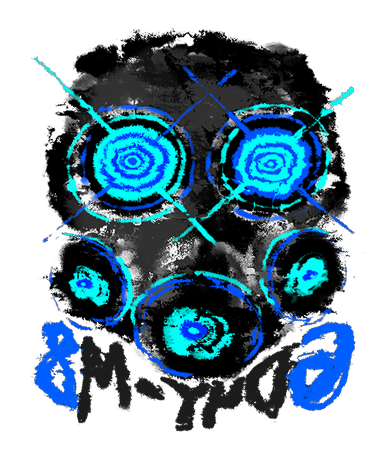
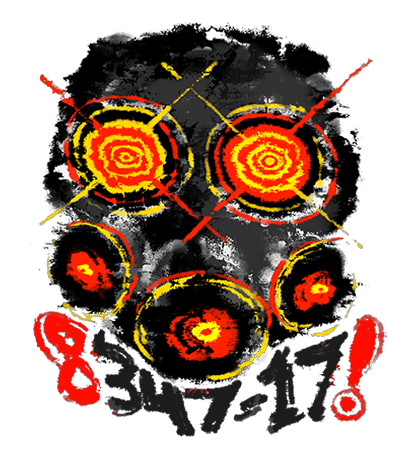
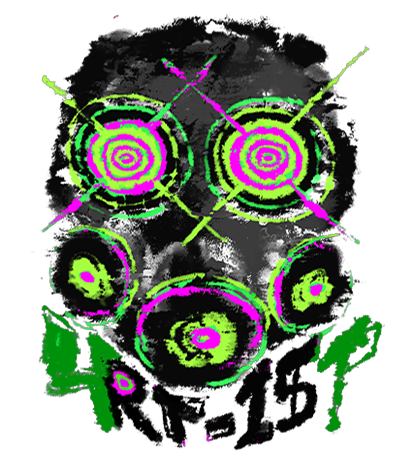
TOMERPG - Telluria City Graffiti (Edited)
Unedited versions under the cut







#tome#terrain of magical expertise#data mining#tomerpg#netkings#kindarspirit#execk#bitopio#rulerruby#bincho#pheturin
5 notes
·
View notes
Text

The history of Telluria, according to Aristasians. From the All Girl Worlds website, which seemed to be a proto Sundaughter Press.
You can view an archive here.
1 note
·
View note
Text
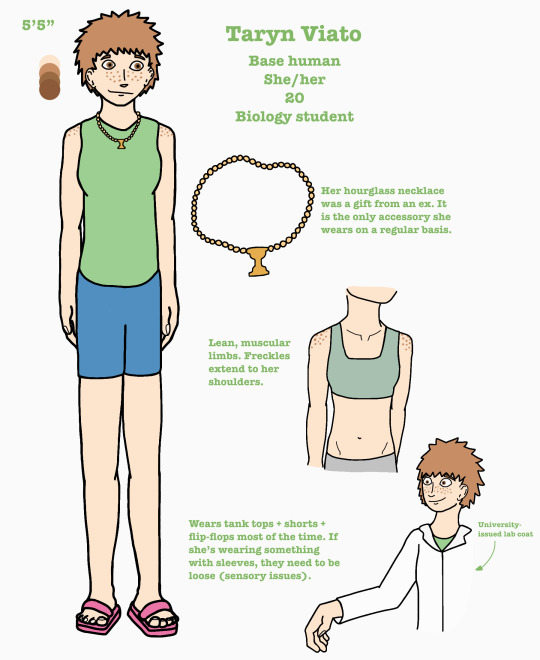
I had a bit of an epiphany regarding how I want to make reference sheets, so I edited / partially redid Taryn’s ref.
#Taryn Viato#Verdantland Trilogy#Telluria#oc#original character#reference sheet#character reference#character design
2 notes
·
View notes
Text
(Another copy of) Vladimir Sorokin's Telluria (Book acquired, 23 July 2022)
(Another copy of) Vladimir Sorokin’s Telluria (Book acquired, 23 July 2022)
A finished copy of Vladimir Sorokin’s novel Telluria arrived at Biblioklept World Headquarters yesterday. The novel, in translation by Max Lawton, has been my favorite read so far this year. It’s on sale in a few weeks from the good people at NYRB. I would normally share their copy from the back of the book, but I have something better. I’ve got an interview with translator Max Lawton…
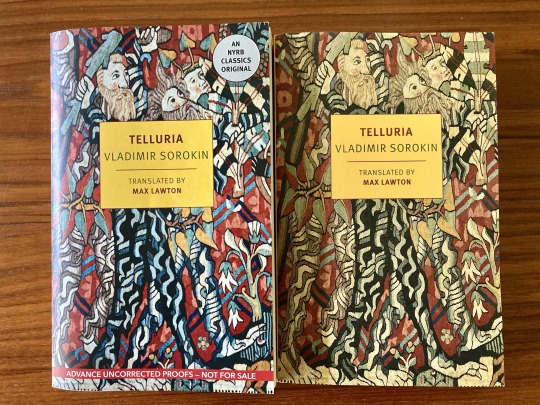
View On WordPress
1 note
·
View note
Photo
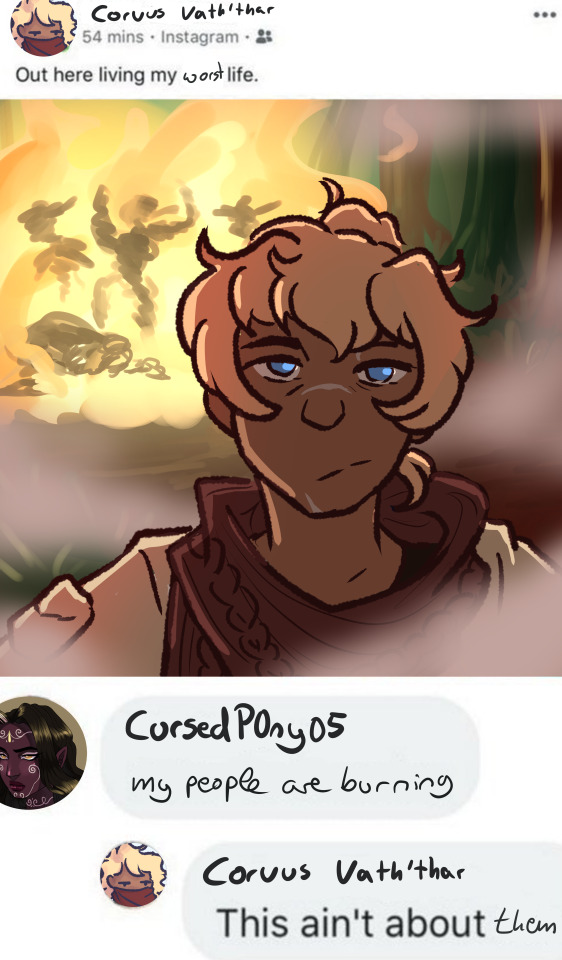
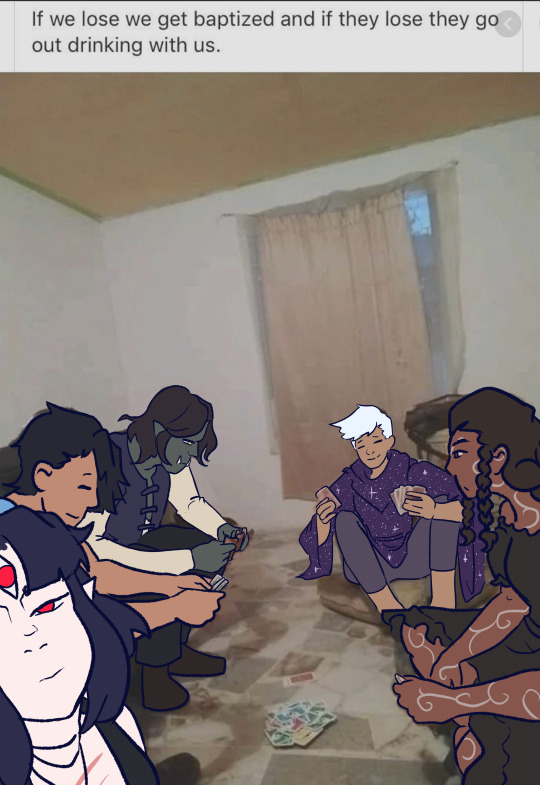



Have some memes from my telluria campaign
Because i love this party
#dnd#Dungeons and Dragons#party memes#aasimar#angel#tiefling rogue#edgy#bard#wizard#cleric#paladin#fighter#rogue#fallen angel#medieval#fantasy#dnd memes#character meme
35 notes
·
View notes